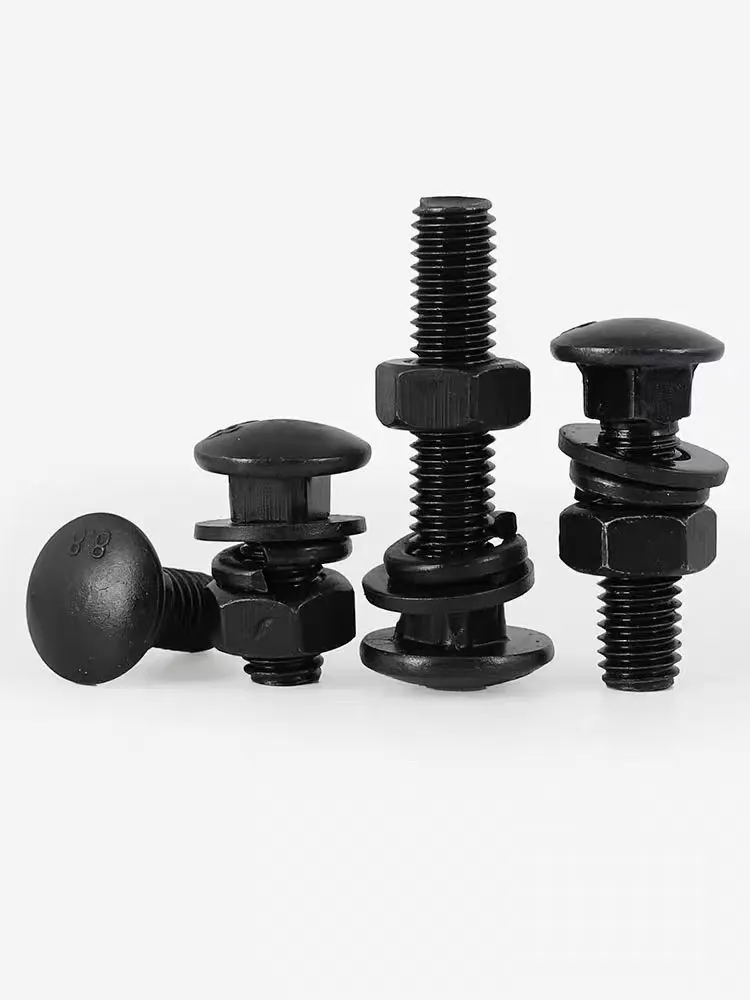

Exploring the Benefits and Applications of Disc Spring Washers in Engineering
Sep . 29, 2024 01:33 Back to list
Exploring the Benefits and Applications of Disc Spring Washers in Engineering
Understanding Disc Spring Washers Essential Components for Mechanical Engineering
Disc spring washers, often referred to as Belleville washers, are vital components in various mechanical and engineering applications. Their unique design and functionality make them an ideal choice for situations requiring a high degree of flexibility, load-bearing capacity, and precise tension maintenance. This article delves into the characteristics, applications, and advantages of disc spring washers, showcasing their importance in modern engineering.
Design and Characteristics
Disc spring washers are typically conical in shape, allowing them to compress and expand under load. This geometric design enables them to exert a significant axial force while occupying minimal space. Unlike traditional flat washers, disc spring washers are loaded in the axial direction, which allows them to accommodate high loads without permanently deforming. They can be manufactured from various materials, including steel, stainless steel, and other alloys, depending on the intended application and environmental conditions.
The spring constant of a disc spring washer is influenced by its thickness, diameter, and the angle of its cone. This feature allows engineers to select the right washer for specific applications by adjusting these variables to achieve desired performance characteristics, such as stiffness and load capacity.
Applications
Disc spring washers are employed in various industries, including automotive, aerospace, construction, and manufacturing. Their applications can be categorized into several areas
1. Fastening and Joinery In mechanical assemblies, disc spring washers are often used under nuts and bolts to maintain tension and prevent loosening due to vibration and movement. This is particularly important in automotive applications, where safety and reliability are paramount.
2. Vibration Dampening The inherent flexibility of disc spring washers makes them effective in absorbing vibrations in machinery, ensuring smoother operation and reducing wear and tear on components.
3. Load Distribution These washers are also utilized to distribute load more evenly over surfaces, protecting delicate components from damage caused by concentrated pressure points.
disc spring washer

4. Precision Instruments In precision engineering, disc spring washers can be used to maintain specific pressure settings in instruments, allowing for accurate readings and operations.
Advantages
The use of disc spring washers brings several advantages to engineering designs
1. Space Efficiency Their compact design allows for installation in tight spaces where conventional springs or large washers might not fit.
2. Durability Quality disc spring washers made from proper materials can withstand harsh environments, including extremes of temperature and chemical exposure, thus enhancing the longevity of mechanical assemblies.
3. Customizability Engineers can easily customize these washers to meet specific requirements, ensuring optimal performance in diverse applications.
4. Cost-Effectiveness Their ability to provide effective solutions for tension maintenance and vibration dampening can lead to lower overall maintenance costs and enhanced system reliability.
Conclusion
Disc spring washers are invaluable components in the realm of mechanical engineering. Their unique design allows them to perform essential functions that enhance the efficiency and longevity of various systems. As industries continue to evolve, the innovative use of disc spring washers will undoubtedly play a crucial role in the development of new technologies and products, ensuring greater safety, efficiency, and reliability across diverse applications. Understanding their characteristics and applications empowers engineers to make informed decisions in their designs, optimizing performance and functionality in any mechanical assembly.
Latest news
-
High-Strength Hot Dip Galvanized Bolts - Hebei Longze | Corrosion Resistance, Customization
NewsJul.30,2025
-
Hot Dip Galvanized Bolts-Hebei Longze|Corrosion Resistance&High Strength
NewsJul.30,2025
-
High-Strength Hot-Dip Galvanized Bolts-Hebei Longze|Corrosion Resistance&High Strength
NewsJul.30,2025
-
Hot Dip Galvanized Bolts-Hebei Longze|Corrosion Resistance&High Strength
NewsJul.30,2025
-
Hot Dip Galvanized Bolts - Hebei Longze | Corrosion Resistance, High Strength
NewsJul.30,2025
-
High-Strength Hot Dip Galvanized Bolts-Hebei Longze|Corrosion Resistance, Grade 8.8
NewsJul.30,2025

